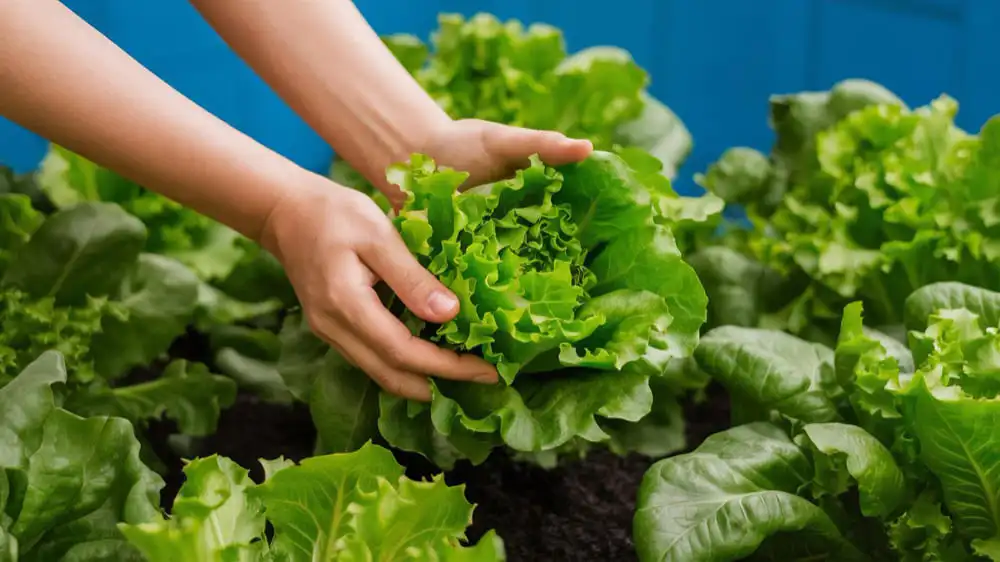How to grow lettuce at home is a question many people interested in healthy eating and home gardening ask. Growing your own lettuce is not only a rewarding hobby but also a practical way to ensure a steady supply of fresh, nutritious greens. In this comprehensive guide, we’ll explore everything you need to know about cultivating lettuce in your own garden or indoor space, including the best varieties, planting tips, and essential care techniques.
Why Grow Lettuce at Home?
Growing lettuce at home offers several benefits:
- Freshness: Homegrown lettuce is incredibly fresh, which means it’s packed with nutrients and flavor.
- Pesticide-Free: You control what goes into your lettuce, avoiding pesticides and other chemicals.
- Cost-Effective: Growing your own lettuce is more affordable than buying pre-packaged greens from the store.
- Convenience: Having lettuce readily available in your garden or kitchen means you can enjoy fresh salads and sandwiches anytime.
Choosing the Best Lettuce Varieties for Your Home Garden
Selecting the right lettuce varieties is crucial for a successful harvest. Here’s a closer look at some popular types:
- Leaf Lettuce: Ideal for beginners, leaf lettuce includes varieties like loose-leaf and oakleaf. It’s easy to grow and harvest, with tender leaves that you can pick individually.
- Romaine Lettuce: Known for its crisp texture and rich flavor, romaine lettuce is a staple in many salads. It forms tall, upright heads and is well-suited for cooler climates.
- Butterhead Lettuce: This type features soft, buttery leaves and a mild taste. Butterhead lettuce is perfect for delicate salads and can be grown indoors or outdoors.
- Iceberg Lettuce: Although it’s less nutrient-dense compared to other varieties, iceberg lettuce is crunchy and popular for its texture in salads and sandwiches.
When selecting varieties, consider your climate and growing conditions. Some types may perform better in specific environments.
Preparing Your Growing Space for Lettuce
You can grow lettuce in various spaces, from traditional garden beds to indoor pots. Here’s how to prepare your growing area:
- Outdoor Gardens: Choose a sunny spot with well-drained soil for your lettuce. Lettuce prefers cooler temperatures, so plant it in early spring or late summer. Improve soil quality by adding compost or organic matter.
- Indoor Gardens: For growing lettuce indoors, use containers with drainage holes. Position them near a sunny window or under grow lights to ensure adequate light for healthy growth.
- Hydroponic Systems: If you’re interested in hydroponic gardening, lettuce grows well in this system, which uses nutrient-rich water instead of soil. This method can be a space-saving option for indoor gardening.
Planting Lettuce Seeds: Step-by-Step
Follow these steps to plant lettuce seeds successfully:
- Sowing Seeds: Plant seeds about ¼ inch deep in the soil or growing medium. Space seeds 1 inch apart to allow for proper growth.
- Watering: Keep the soil consistently moist, but avoid waterlogging. Lettuce seeds need regular moisture to germinate effectively.
- Germination: Expect seeds to germinate within 7-10 days. Once seedlings appear, thin them out to prevent overcrowding, giving each plant room to grow.
Caring for Your Lettuce Plants
Proper care is essential for a healthy lettuce crop:
- Watering: Maintain consistent moisture levels, especially during warm weather. Lettuce has shallow roots and requires regular watering.
- Fertilizing: Apply a balanced, all-purpose fertilizer to provide essential nutrients. Follow the manufacturer’s instructions for application rates.
- Pest Control: Monitor for pests such as aphids and slugs. Use organic pest control methods, like neem oil or insecticidal soap, to keep your lettuce safe.
- Harvesting: Harvest lettuce when the leaves are at your preferred size. For leaf lettuce, pick outer leaves first, allowing inner leaves to continue growing. For head lettuce, harvest the entire head when it’s firm and well-formed.
Growing Lettuce Indoors: Tips and Tricks
Indoor gardening can be particularly rewarding, especially if you’re short on outdoor space. Here are some tips for successful indoor lettuce cultivation:
- Light Requirements: Lettuce needs about 12-14 hours of light daily. Use grow lights if natural light is insufficient.
- Temperature Control: Maintain indoor temperatures between 60-70°F (15-21°C) for optimal growth. Avoid placing plants near heat sources or drafts.
- Ventilation: Ensure good air circulation to prevent mold and mildew. Use a small fan if necessary.
Benefits of Homegrown Lettuce
Homegrown lettuce offers several health benefits:
- Nutrient-Rich: Freshly picked lettuce retains more vitamins and minerals compared to store-bought varieties.
- Flavorful: Homegrown lettuce has a superior taste and texture, making your meals more enjoyable.
- Economical: Growing your own lettuce reduces grocery costs and minimizes waste from packaging.
Tips for Successful Lettuce Growing
- Seasonal Planning: Lettuce thrives in cooler temperatures. Plan your planting around seasonal weather to avoid bolting and bitterness.
- Crop Rotation: Rotate your lettuce crops annually to maintain soil health and reduce disease risk.
- Companion Planting: Lettuce grows well alongside other cool-season crops like radishes and carrots. Avoid planting near plants that may compete for nutrients, such as cabbage.
Conclusion – How to Grow Lettuce at Home
How to grow lettuce at home is a journey that offers both practical and enjoyable rewards. By selecting the right varieties, preparing your growing space, and following essential care techniques, you can enjoy a steady supply of fresh, homegrown lettuce. Whether you’re growing indoors or outdoors, this guide provides the necessary information to help you succeed in your lettuce gardening endeavors. Start today and experience the benefits of fresh, nutritious greens in your meals!





